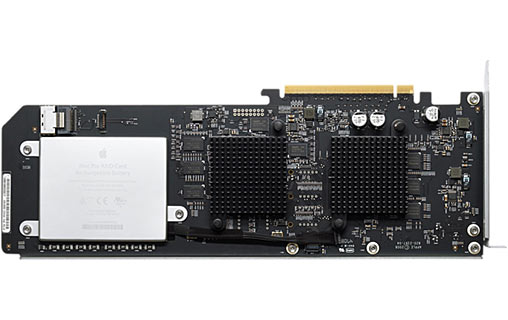The Mirroed RAID Set is RAID 1 and the Striped RAID Set option is RAID 0. The Concatenated RAID Disk Set is another option entirely. That means the RAID is not arranged redundantly; instead, it's just a bunch of disks. You don't get the speed of RAID 0 or the redundancy of RAID 1. You can use macOS Sierra’s Disk Utility app to create a software RAID, but you can also use it to delete the RAID. If you created a RAID using Disk Utility and now you don’t want to use the disks. Testing conducted by Apple in November 2019 using preproduction 2.5GHz 28-core Intel Xeon W-based Mac Pro systems with 384GB of RAM and dual AMD Radeon Pro Vega II Duo graphics with 64GB of HBM2 each; and shipping 2.3GHz 18-core Intel Xeon W-based 27-inch iMac Pro systems with 256GB of RAM and Radeon Pro Vega 64X graphics with 16GB of HBM2, as well as shipping 2.7GHz 12-core Intel. Apple Mac Pro RAID Controller Card 639-0108 A1228 A1247 for 2009-2012 Tower 5 out of 5 stars (1) 1 product ratings - Apple Mac Pro RAID Controller Card 639-0108 A1228 A1247 for 2009-2012 Tower.
Disk Utility User Guide


You can create a Redundant Array of Independent Disks (RAID) set to optimize storage performance and increase reliability in case of a disk failure. You can also create a set that concatenates smaller disks to act as one larger disk.
Raid Card For Mac Pro
In the Disk Utility app on your Mac, choose File > RAID Assistant.
Select a set type:
Striped (RAID 0) set: A striped RAID set can speed up access to your data. You can’t create a RAID set on your startup disk; you must first start up your computer from another disk.
Mirrored (RAID 1) set: Protect your data against hardware failure with a mirrored RAID set. When you create a mirrored RAID set, your data is written to multiple disks so the information is stored redundantly. You can’t create a RAID set on your startup disk; you must first start up your computer from another disk.
Concatenated (JBOD) set: Increase storage space with a concatenated disk set. If you need one large disk, but you have several smaller disks, you can create a concatenated disk set to use as one large disk.
Select the checkboxes of the disks you want to include in the set.
For each disk, click the pop-up menu in the Role column and choose “RAID slice” or “Spare” to designate the disk as a standard member or spare in the set, then click Next.
Enter a name for the RAID set in the RAID Name field.
Click the Format pop-up menu, then choose a volume format that you want for all the disks in the set. (See File system formats available in Disk Utility.)
Click the “Chunk size” pop-up menu, then choose a disk chunk size that you want used for all the disks.
When you create a striped set, chunks of data from the same file are distributed across the drives. Ideally, you want data distributed across drives evenly and at an optimum size so that it can be efficiently accessed. If you want high data throughput from your set, choose a smaller chunk size so that data is spread across the drives and one drive can be accessing data while another is seeking the next chunk. With mirrored disk sets, choose a chunk size that matches the data you’re accessing. For example, when working with video files, your Mac is accessing large chunks of data, whereas when using a database of many small records, your disks may be accessing smaller chunks of information.
If you are creating a mirrored RAID set, select the “Automatically rebuild” checkbox to allow the set to be automatically rebuilt when member disks are reconnected.
Click Create.
Click Done.
If you have a Mac Pro with a Mac Pro RAID card, use RAID Utility. It uses the RAID card for better performance and to create more types of RAID sets.
Raid Mac Pro 1.1
